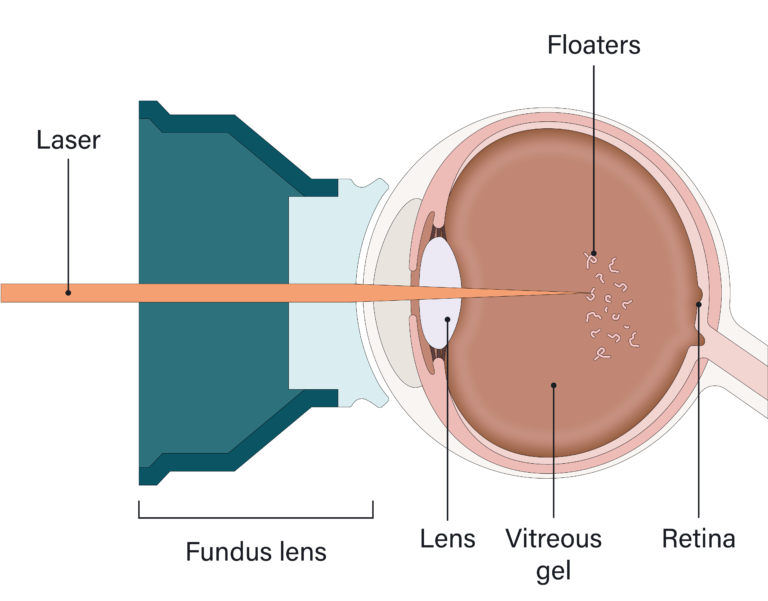Floaters
Floaters are small, semi-transparent specks that seem to “float” across your field of vision and they tend to move as your eyes move. They’re fairly common and many people will experience it at some point in their lives. Floaters are typically caused by bits of debris within the gel-like substance that fills the inside of the eye (called the vitreous humor). Larger floaters can cause difficulty in reading and driving and they’re incredibly annoying!
The most common causes of floaters include:
- Age – The vitreous humor tends to change with age (gel may become more liquid and shrink or clump together)
- Posterior vitreous detachment (PVD) – If the vitreous humor separates from the retina, it can pull on the retina, causing floaters to become more noticeable
- Eye injuries/trauma – Trauma can result in the release of debris into the vitreous humor causing floaters
- Eye conditions/diseases – Certain conditions, such as retinal tears or detachments, bleeding in the eye (vitreous hemorrhage), or inflammation, can lead to floaters
If you suddenly notice a large number of new floaters, light flashes, or have other changes in your vision, it’s crucial to have it checked out right away as these symptoms could indicate a serious eye condition (like retinal tear or detachment).
Treatment
In most cases, floaters aren’t a cause for concern and tend to become less noticeable over time as you get used to them. However, if floaters are interfering significantly with your vision and your quality of life, Dr. Youssef can assess your condition and discuss potential treatment options.
Laser treatment as a solution to floaters isn’t well-known, so some patients with floaters are told to “learn to live with it” and that vitrectomy is the only treatment. A vitrectomy is surgery which involves removing the vitreous humor along with the floaters but it’s rarely recommended because of the high risk of cataract formation and a small risk of retinal detachment. Fortunately, YAG laser obliteration is a revolutionary, effective and safe way to treat those pesky floaters. Dr. Youssef has been performing this procedure since 2006 with excellent results!
YAG Laser Obliteration
YAG laser obliteration (sometimes called YAG laser capsulotomy) is a non-invasive and quick procedure that can zap away those pesky floaters and help to improve vision. It’s non-invasive so floaters can be treated without opening the eye and risking cataract formation, retinal detachments, and infections or bleeding. It’s much safer and less expensive than a vitrectomy. It’s reimbursed by most insurance companies, including OHIP.
The patient is seated comfortably in an examination chair at PVSC. Eye drops may be administered to dilate the pupil and numb the eye to ensure comfort during the procedure. Dr. Youssef uses a YAG (yttrium-aluminum-garnet) laser which emits a focused, high-energy beam of light that vaporizes and removes the obstructing tissue. This creates a clear pathway for light to enter the eye and reach the retina, restoring clear vision.
Patients often experience immediate improvement in vision as the obstruction is removed. After the YAG laser obliteration, patients may experience some floaters or specks in their vision temporarily, but these usually go away quickly. Patients may be prescribed medicated eye drops to reduce the risk of complications, such as increased eye pressure, and most patients can return to their normal activities shortly after the procedure.

